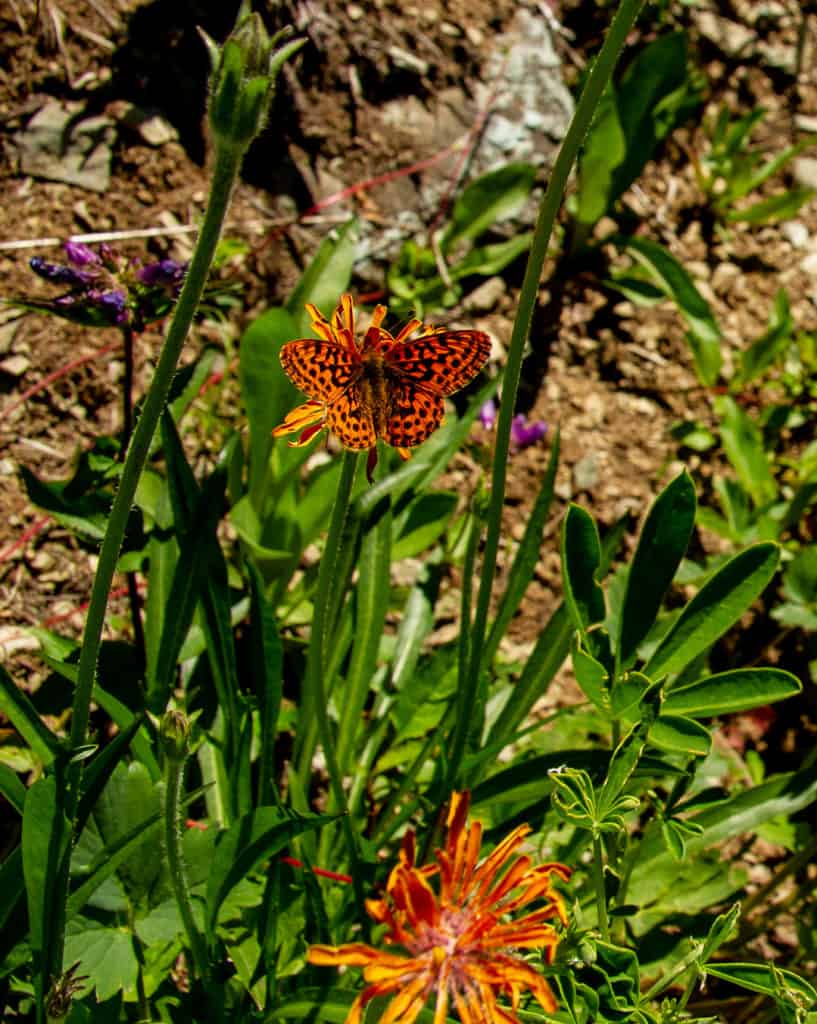
Sauk Mountain: Wildflowers and Butterflies in the North Cascades

Get up early, wear sunscreen and don’t forget to bring water! Sauk Mountain is a low-elevation peak in the Skagit Valley that features a fairly-easy switchback climb up meadow fettered with wildflowers and butterflies in mid-summer.
If you get out there early and hike up in the shade of the hillside, you’ll stay cool and have better light for taking photos along the trail. Here are some of the lovely flowers I saw on a recent trip in July…

My knowledgable hiking pals called out the various bursting flowers during our hike. I was able to contribute a couple of the usual suspects, including Nootka Rose, Columbine and Paintbrush. Though some were entirely new (to me!) Institute staff know that July is the best time to get out and hit the peaks and Sauk is easily accessible to those in the Skagit community.

The mountain overlooking the Skagit Valley offers panoramic views of the North Cascades — the Pickets, Glacier Peak, Mount Rainier, Mt. Pilchuck, the Olympics, Twin Sisters and Mount Baker were all visible on Friday the 13th when I finally made my way to the top.




We hear the bass drum of a Ruffed Grouse as we turn on switchbacks that run through small patches of forest. Butterflies catch our eyes and we scramble to capture them in photos.





Institute graduate students Marissa and Zoe were out on the trail the day before us in response to an invite from Riley Gabriel — crew leader for the Cascades Butterfly Project at North Cascades National Park – to volunteer and join in on this Citizen Science Project.
Marissa shared a bit of background about why they volunteered:
We volunteered because we wanted exposure to field studies and are looking for a way to incorporate citizen science into environmental education. Life long learning is important to us and we wanted to gain experience in the field and be exposed to what these projects entail in hopes to continue this type of work in the future. And being outside learning new things isn’t a bad way to spend a day.


Pro tip for capturing butterflies in photographs: if your battery will allow for it, keep your camera on and in standby — set your camera to auto-focus and shoot from the hip because you won’t have any time to fuss!
One of the coolest things about the Cascades Butterfly Project is that it’s a Citizen Science project. It’s a great way for volunteers to get experience as a field biologist, get a foot in the door with the National Park Service, and have fun in the mountains! We have some volunteers who have been collecting data for this project for the past 5 seasons, we couldn’t do it without them!
— Riley Gabriel

Here’s a write up about the project by KUOW:
The routes surveyed are at Cascade Pass, Maple Pass, Easy Pass, Sauk Mountain, and Skyline Divide. The Cascades Butterfly Project Crew will be visiting each site once a week throughout the summer. If you’re on the trail, be sure to say hello!
For more info, Riley can be reached at nps_nocacascadebutterflies@
We previously wrote about the natural history of Sauk Mountain and our involvement with the Cascades Butterfly Project in the following posts:

